Instructions for Side by Side Printing
- Print the notecards
- Fold each page in half along the solid vertical line
- Cut out the notecards by cutting along each horizontal dotted line
- Optional: Glue, tape or staple the ends of each notecard together
Chapter 4
front 1 Of the following, the tissue with the greatest capacity for regeneration is A) skeletal muscle. B) neurons. C) epithelium. D) smooth muscle. | back 1 C |
front 2 In connective tissues, the primary extracellular molecules responsible for resisting tension are A) intermediate filaments in fibroblasts. | back 2 B |
front 3 Which of the following provides the least resistance to diffusion? A) simple columnar epithelium B) simple cuboidal epithelium C) simple squamous epithelium D) stratified squamous epithelium | back 3 C |
front 4 The type of cell junction that closes off the space between epithelial cells, thereby limiting the passage of small molecules, is the A) tight junction. B) adherens junction. C) desmosome. D) gap junction. | back 4 A |
front 5 Inflamed tissue is often warm to the touch because of A) accumulation of bacterial toxins. B) increased blood flow to the area. C) infiltration by neutrophils. D) leakage of clotting proteins. | back 5 B |
front 6 The best definition of fibrosis is A) the production of collagen fibers. B) the production of elastic fibers. C) the formation of dense regular connective tissue. D) the formation of scar tissue. | back 6 D |
front 7 Which one of the following basic types of tissues functions as a covering tissue for the body? A) epithelial | back 7 A |
front 8 Which of the following is not a characteristic of the inflammatory response? A) attacks and eliminates specific foreign molecules B) involves release of chemicals that cause local vasodilation C) occurs within connective tissue D) results in edema and delivery of chemicals needed for repair | back 8 A |
front 9 A structure that secretes hormones into the blood is A) a plasma cell. B) a goblet cell. C) an endocrine gland. D) an exocrine gland. | back 9 C |
front 10 Connective tissue that must resist forces pulling it from many different directions without stretching would most likely be A) areolar connective tissue. B) dense irregular connective tissue. C) dense regular connective tissue. D) reticular connective tissues. | back 10 B |
front 11 The distinguishing characteristic between tight junctions and adherens junctions is that A) adherens junctions attach to the actin myofilaments of the cytoskeleton, whereas tight junctions do not. B) adherens junctions involve integral membrane proteins, whereas tight junctions do not. C) tight junctions are present near apical lateral borders, whereas adherens junctions are located near basal lateral borders. D) tight junctions involve fusion of proteins on adjacent cells, whereas adherens junctions create tunnels between adjacent cells. | back 11 A |
front 12 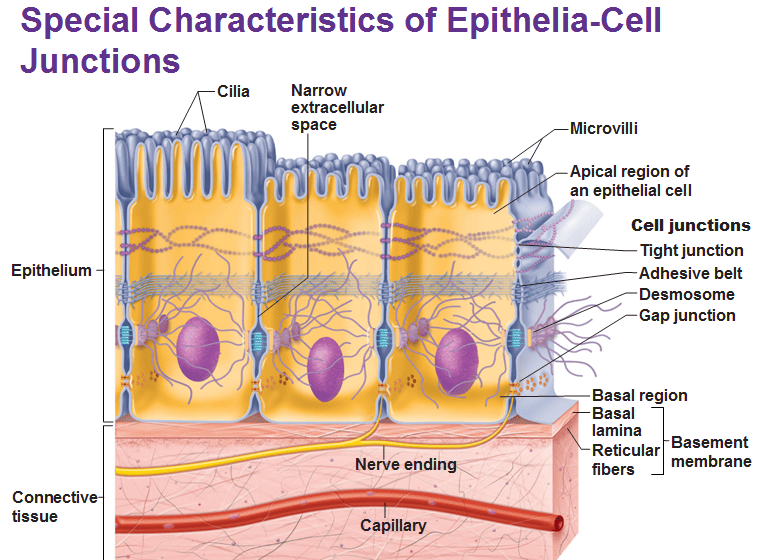 Which letter indicates the connective tissue layer? | back 12 C |
front 13 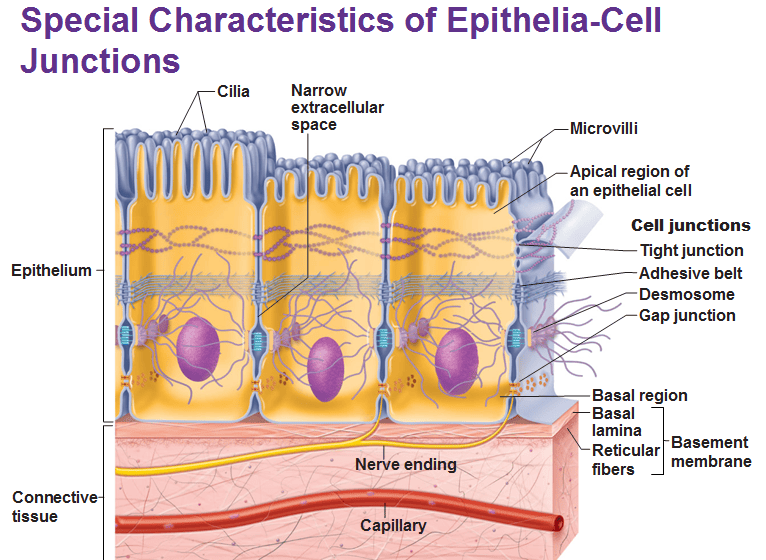 Which letter indicates the epithelium? | back 13 B |
front 14 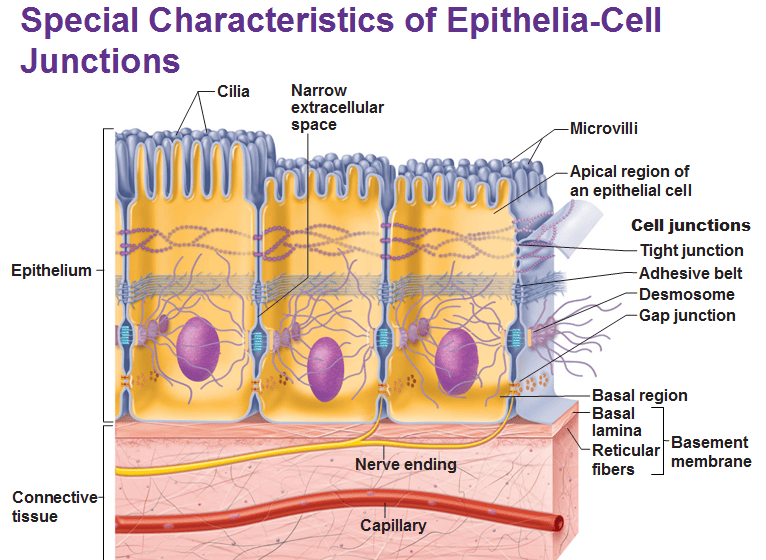 Which letter indicates microvilli? | back 14 E |
front 15 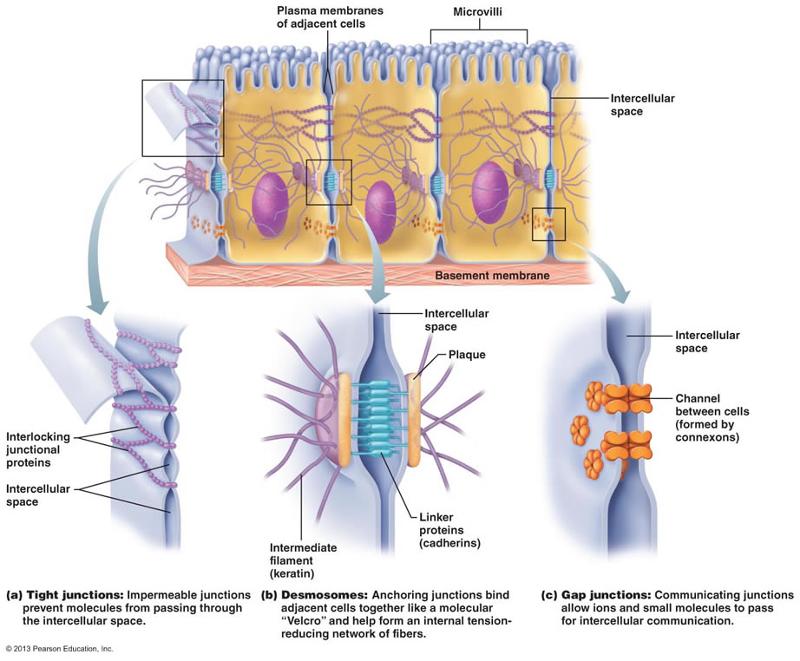 Which letter indicates the cytoplasmic protein fiber that connects desmosomes? | back 15 E |
front 16 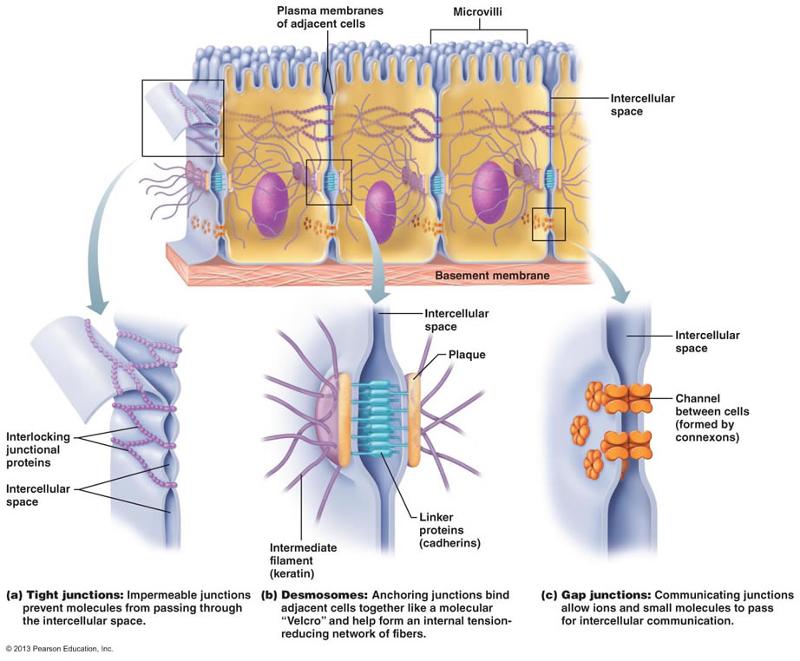 Which letter indicates a cellular junction that prevents molecules from passing between epithelial cells? | back 16 A |
front 17 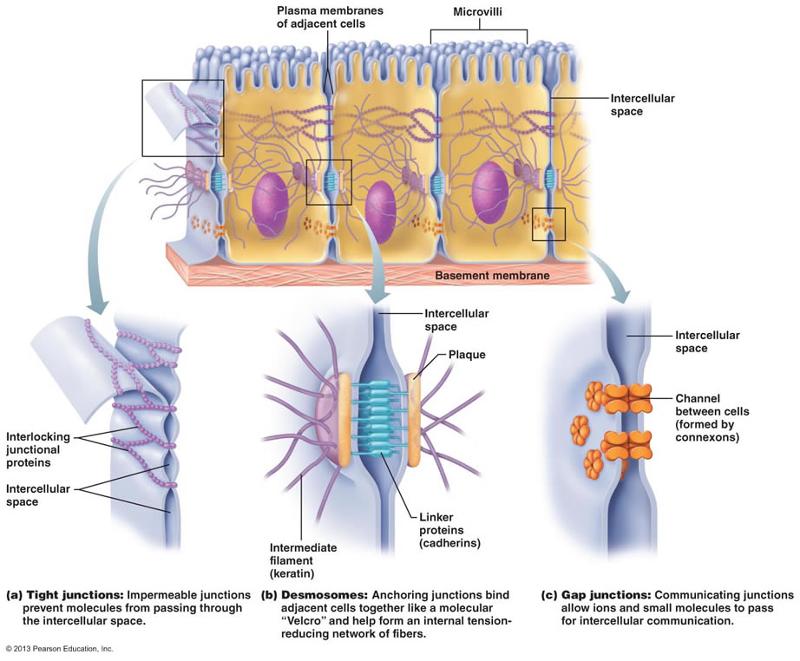 Which letter indicates tunnel-like junctions in the lateral membranes of adjacent epithelial cells? | back 17 D |
front 18 This tissue type, in addition to certain muscle tissues, is capable of generating electrical impulses. a. muscle b. nervous c. connective tissue | back 18 B |
front 19 Bone and cartilage are examples of tissues in this category. a. muscle | back 19 C |
front 20 This type of tissue includes smooth and cardiac a. muscle | back 20 A |